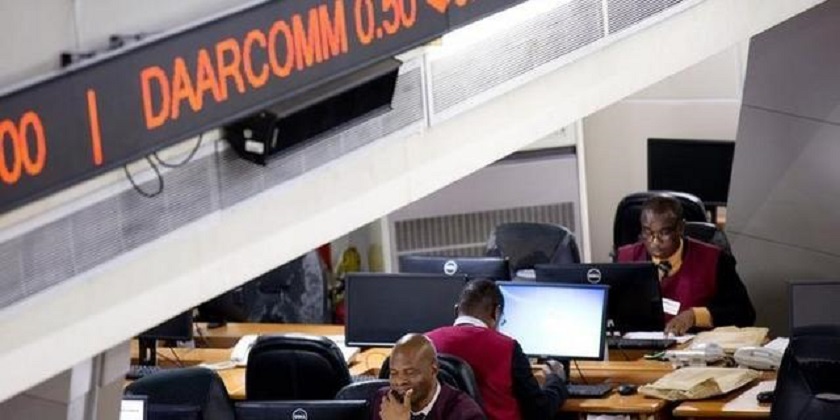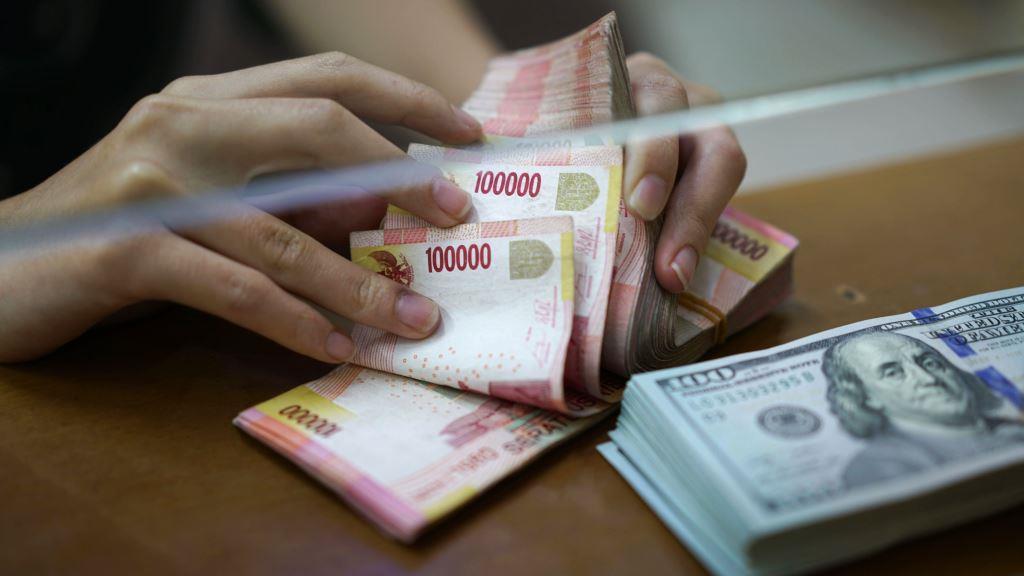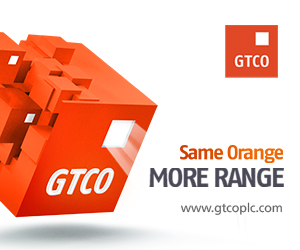Economy
Making Money with Cryptocurrencies and Alternative Assets Wisely

With the emergence of cryptocurrencies and alternative assets, the prospect of increasing your fortune has never been more alluring. “What if you could turn your digital assets into real wealth?” Regardless of your level of expertise, knowing how to operate in this ever-changing industry is crucial. A thorough grasp is necessary to navigate the complexity of alternative assets, and making the proper connections with the right resources can make all the difference. Go quantum-ai.trading is a cutting-edge platform that connects traders with knowledgeable insights, improving their experience in these ever-changing markets. This manual will guide you through tried-and-true tactics, potential hazards, and creative methods to profit from the growing realm of digital wealth.
Understanding Cryptocurrencies
Cryptocurrencies have emerged as a revolutionary force in the world of finance, offering decentralized digital currencies that are not controlled by any central authority. Bitcoin, Ethereum, and other digital assets have garnered significant attention as potential ways to store and grow wealth. The first step in making money with cryptocurrencies is understanding their core principles and functionality. Unlike traditional currencies, cryptocurrencies rely on blockchain technology—a decentralized ledger that records all transactions.
Many investors see cryptocurrencies as a high-risk, high-reward venture. The volatility of the market means that prices can skyrocket or plummet quickly, creating opportunities for both large profits and significant losses. However, with careful research and strategic planning, cryptocurrency investors can capitalize on these fluctuations.
Trading Cryptocurrencies
One of the most popular ways to make money with cryptocurrencies is through trading. This involves buying and selling digital currencies on exchanges, aiming to profit from price movements. Traders typically use two main strategies: day trading and swing trading.
Day trading refers to making multiple trades within a single day, capitalizing on short-term price fluctuations. This strategy requires constant monitoring of market conditions and a keen sense of timing. Successful day traders rely on technical analysis, using charts and indicators to predict price movements.
Swing trading, on the other hand, involves holding assets for a few days or weeks, aiming to profit from medium-term price swings. Swing traders typically focus on market trends, news, and other factors that could influence the value of a cryptocurrency.
Both approaches require skill, experience, and risk management. Beginners should start small and gradually increase their positions as they gain confidence and expertise in the market.
Mining Cryptocurrencies
Another method of earning from cryptocurrencies is through mining. Mining involves using computer power to solve complex mathematical problems, securing the blockchain network, and verifying transactions. In return for this work, miners are rewarded with newly minted coins.
Mining can be done individually or by joining a mining pool, where resources are shared among multiple participants to increase the chances of solving a problem and receiving rewards. While the rewards may seem appealing, mining can be resource-intensive, requiring expensive equipment and substantial electricity costs. As a result, it may not be suitable for everyone, particularly those with limited access to affordable power.
However, for those with the right resources and knowledge, mining can be a lucrative venture. It’s essential to consider the upfront investment in hardware and the ongoing costs of electricity before diving into mining.
Investing in Alternative Assets
While cryptocurrencies have gained popularity, other alternative assets also present opportunities for profit. These include commodities, real estate, precious metals, and collectibles. Investing in these assets can offer diversification and hedge against traditional market risks.
Commodities, such as gold, oil, and agricultural products, can be profitable investments, particularly during times of economic uncertainty. Investors can purchase commodities directly or use derivatives such as futures contracts, which allow them to speculate on price movements without owning the physical goods.
Real estate is another alternative asset that has long been a popular investment choice. Investors can profit by purchasing property and renting it out or flipping it for a profit. Real estate investments tend to provide long-term returns and are often seen as a safer bet compared to more volatile assets.
Precious metals, such as gold and silver, are considered a store of value. Many investors turn to precious metals during periods of inflation or market instability. These assets can be bought in physical form, such as coins and bars, or through exchange-traded funds (ETFs) that track the price of metals.
Finally, collectibles, such as rare art, vintage cars, and limited-edition items, can be valuable assets. However, investing in collectibles requires specialized knowledge and an understanding of the market’s trends. While some collectibles can appreciate significantly in value, others may not provide the same return on investment.
Diversification and Risk Management
When exploring cryptocurrencies and other alternative assets, diversification is crucial. Rather than focusing solely on one asset class, investors should spread their investments across various sectors to mitigate risk. Diversifying helps balance the potential for gains with the protection of capital.
Risk management is equally important when investing in high-risk markets like cryptocurrencies. Setting stop-loss orders, only investing what one can afford to lose, and keeping a close eye on market trends are all strategies that can help minimize potential losses. Being prepared for the possibility of volatility can help investors stay calm and make informed decisions during turbulent market conditions.
Long-Term Investment Strategies
For those looking to make money with cryptocurrencies and other alternative assets, long-term investment strategies can be just as rewarding as short-term trades. Holding assets for an extended period, also known as “HODLing” in the cryptocurrency world, allows investors to ride out market fluctuations and potentially reap larger rewards in the future.
By carefully selecting promising assets and maintaining patience, long-term investors can benefit from the compounding effects of their investments. This approach often requires less active involvement than day trading or swing trading, making it an attractive option for those who prefer a more passive investment style.
Conclusion
“The upcoming era of finance is digital—will you join it?” With the ongoing transformation of the investment landscape by cryptocurrencies and alternative assets, the opportunity to generate wealth is unmatched. By keeping yourself updated, broadening your investments, and implementing wise financial strategies, you can discover new paths for economic advancement. Welcome the future, and begin to have your money earn more for you now.
Economy
Nigerian Stocks Close 1.13% Higher to Remain in Bulls’ Territory

By Dipo Olowookere
The local stock market firmed up by 1.13 per cent on Friday as appetite for Nigerian stocks remained strong.
Investors reacted well to the 2026 budget presentation of President Bola Tinubu to the National Assembly yesterday, especially because of the more realistic crude oil benchmark of $64 per barrel compared with the ambitious $75 per barrel for 2025. This year, prices have been between $60 and $65 per barrel.
Business Post observed profit-taking in the commodity and energy sectors as they respectively shed 0.14 per cent and 0.03 per cent.
But, bargain-hunting in the others sustained the positive run, with the consumer goods index up by 3.82 per cent.
Further, the industrial goods space appreciated by 1.46 per cent, the banking counter improved by 0.08 per cent, and the insurance industry gained 0.04 per cent.
As a result, the All-Share Index (ASI) increased by 1,694.33 points to 152,057.38 points from 150,363.05 points and the market capitalisation chalked up N1.080 trillion to finish at N96.937 trillion compared with Thursday’s closing value of N95.857 trillion.
A total of 34 shares ended on the advancers’ chart, while 24 were on the laggards’ log, representing a positive market breadth index and bullish investor sentiment.
Austin Laz gained 10.00 per cent to close at N2.42, Union Dicon also jumped 10.00 per cent to N6.60, Tantalizers increased by 9.80 per cent to N2.69, Aluminium Extrusion improved by 9.78 per cent to N12.35, and Champion Breweries grew by 9.71 per cent to N16.95.
Conversely, Sovereign Trust Insurance dipped by 7.42 per cent to N3.87, Royal Exchange lost 6.84 per cent to trade at N1.77, Omatek slipped by 6.84 per cent to N1.09, Eunisell depreciated by 5.88 per cent to N80.00, and Eterna dropped 5.63 per cent to close at N28.50.
Yesterday, traders transacted 1.5 billion units worth N21.8 billion in 25,667 deals compared with the 839.8 million units sold for N32.8 billion in 23,211 deals in the preceding session, showing a surge in the trading volume by 76.61 per cent, an uptick in the number of deals by 10.58 per cent, and a shrink in the trading value by 33.54 per cent.
Economy
FrieslandCampina, Two Others Erase N26bn from NASD OTC Bourse

By Adedapo Adesanya
Three stocks stretched the bearish run of the NASD Over-the-Counter (OTC) Securities Exchange by 1.21 per cent on Friday, December 19, with the market capitalisation giving up N26.01 billion to close at N2.121 billion compared with the N2.147 trillion it ended a day earlier, and the NASD Unlisted Security Index (NSI) dropping 43.47 points to 3,546.41 points from 3,589.88 points.
The trio of FrieslandCampina Wamco Nigeria Plc, Central Securities Clearing System (CSCS) Plc, and NASD Plc overpowered the gains printed by four other securities.
FrieslandCampina Wamco Nigeria Plc lost N6.00 to sell at N54.00 per unit versus N60.00 per unit, NASD Plc shrank by N3.50 to N58.50 per share from N55.00 per share, and CSCS Plc depleted by N2.91 to N33.87 per unit from N36.78 per unit.
On the flip side, Air Liquide Plc gained N1.01 to close at N13.00 per share versus N11.99 per share, Golden Capital Plc appreciated by 70 Kobo to N7.68 per unit from N6.98 per unit, Geo-Fluids Plc added 39 Kobo to sell at N5.50 per share versus N5.11 per share, and IPWA Plc rose by 8 Kobo to 85 Kobo per unit from 77 Kobo per unit.
During the trading day, market participants traded 1.9 million securities versus the previous day’s 30.5 million securities showing a decline of 49.3 per cent. The value of trades went down by 64.3 per cent to N80.3 million from N225.1 million, but the number of deals jumped by 32.1 per cent to 37 deals from 28 deals.
Infrastructure Credit Guarantee Company (InfraCredit) Plc finished the session as the most active stock by value on a year-to-date basis with 5.8 billion units valued at N16.4 billion, followed by Okitipupa Plc with 178.9 million units transacted for N9.5 billion, and MRS Oil Plc with 36.1 million units traded for N4.9 billion.
The most active stock by volume on a year-to-date basis was still InfraCredit Plc with 5.8 billion units worth N16.4 billion, trailed by Industrial and General Insurance (IGI) Plc with 1.2 billion units sold for N420.7 million, and Impresit Bakolori Plc with 536.9 million units traded for N524.9 million.
Economy
Naira Crashes to N1,464/$1 at Official Market, N1,485/$1 at Black Market

By Adedapo Adesanya
It was not a good day for the Nigerian Naira at the two major foreign exchange (FX) market on Friday as it suffered a heavy loss against the United States Dollar at the close of transactions.
In the black market segment, the Naira weakened against its American counterpart yesterday by N10 to quote at N1,485/$1, in contrast to the N1,475/$1 it was traded a day earlier, and at the GTBank forex counter, it depreciated by N2 to settle at N1,467/$1 versus Thursday’s closing price of N1,465/$1.
In the Nigerian Autonomous Foreign Exchange Market (NAFEX) window, which is also the official market, the nation’s legal tender crashed against the greenback by N6.65 or 0.46 per cent to close at N1,464.49/$1 compared with the preceding session’s rate of N1,457.84/$1.
In the same vein, the local currency tumbled against the Euro in the spot market by N2.25 to sell for N1,714.63/€1 compared with the previous day’s N1,712.38/€1, but appreciated against the Pound Sterling by 73 Kobo to finish at N1,957.30/£1 compared with the N1,958.03/£1 it was traded in the preceding session.
The market continues to face seasonal pressure even as the Central Bank of Nigeria (CBN) is still conducting FX intervention sales, which have significantly reduced but not remove pressure from the Naira. Also, there seems to be reduced supply from exporters, foreign portfolio investors and non-bank corporate inflows.
President Bola Tinubu on Friday presented the government’s N58.47 trillion budget plan aimed at consolidating economic reforms and boosting growth.
The budget is based on a projected crude oil price of $64.85 a barrel and includes a target oil output of 1.84 million barrels a day. It also projects an exchange rate of N1,400 to the Dollar.
President Tinubu said inflation had plunged to an annual rate of 14.45 per cent in November from 24.23 per cent in March, while foreign reserves had surged to a seven-year high of $47 billion.
Meanwhile, the cryptocurrency market was dominated by the bulls but it continues to face increased pressure after million in liquidations in previous session over accelerating declines, with Dogecoin (DOGE) recovering 4.2 per cent to trade at $0.1309.
Further, Ripple (XRP) appreciated by 3.9 per cent to $1.90, Cardano (ADA) rose by 3.5 per cent to $0.3728, Solana (SOL) jumped by 3.4 per cent to $126.23, Ethereum (ETH) climbed by 2.9 per cent to $2,982.42, Binance Coin (BNB) gained 2.0 per cent to sell for $853.06, Bitcoin (BTC) improved by 1.7 per cent to $88,281.21, and Litecoin (LTC) soared by 1.2 per cent to $76.50, while the US Dollar Tether (USDT) and the US Dollar Coin (USDC) traded flat at $1.00 each.
-

 Feature/OPED6 years ago
Feature/OPED6 years agoDavos was Different this year
-
Travel/Tourism9 years ago
Lagos Seals Western Lodge Hotel In Ikorodu
-

 Showbiz3 years ago
Showbiz3 years agoEstranged Lover Releases Videos of Empress Njamah Bathing
-

 Banking7 years ago
Banking7 years agoSort Codes of GTBank Branches in Nigeria
-

 Economy3 years ago
Economy3 years agoSubsidy Removal: CNG at N130 Per Litre Cheaper Than Petrol—IPMAN
-

 Banking3 years ago
Banking3 years agoFirst Bank Announces Planned Downtime
-

 Banking3 years ago
Banking3 years agoSort Codes of UBA Branches in Nigeria
-

 Sports3 years ago
Sports3 years agoHighest Paid Nigerian Footballer – How Much Do Nigerian Footballers Earn





















